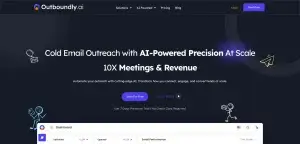Did you know LinkedIn boasts a staggering 740 million users across the globe? That’s a lot of professionals in one place! And guess what? It’s a gold mine for businesses like yours looking to find the perfect audience.
The only question is, how do you sift through this enormous community to find the people who are just right for you? That’s where we come in. This discussion is all about guiding you on how to use LinkedIn search effectively to pinpoint your ideal audience.
We’ve got all the tips and tricks you need to kickstart your business success in 2022. So, are you ready to learn how to find your target audience on LinkedIn? Let’s get started!
Key Takeaways
Wow, did you realize that LinkedIn is home to over 740 million users worldwide? That’s quite a crowd of professionals all clustered together. And here’s the kicker – this vast network can be an absolute treasure chest for businesses like yours, aiming to connect with the ideal audience.
So, the million-dollar question is, how do you navigate this massive network to find the people who are just right for your business? That’s where this guide comes in handy. We’re here to show you how to effectively use LinkedIn’s search feature to zero in on your target audience.
Get ready to jot down some valuable tips and tricks that will help boost your business success in 2022. Are you excited to learn how to connect with your ideal audience on LinkedIn? Well, let’s dive right in!
LinkedIn Search Basics and Filters
Have you ever wondered how to best use LinkedIn to find your ideal audience? Let’s chat about it, shall we?
LinkedIn, as you know, serves up a whole host of search options for you to find folks, companies, and even groups that align with your interests.
Want to connect with someone in a particular location or industry? Or maybe you’re seeking individuals with a certain job title? The filters on LinkedIn have got your back. With these tools, you can zoom in on people who’ve the skills or background you’re keen on, making it easier to reach your target audience. Neat, right?
And it doesn’t stop there. LinkedIn isn’t just about people; it’s also a goldmine for hunting down potential clients or industry partners. By searching for companies, you can tap into opportunities to form strategic partnerships.
But let’s not forget about LinkedIn groups. These are great platforms to meet professionals who share your interests and engage in meaningful conversations.
Of course, to make the most out of LinkedIn, it’s important to keep your profile updated and learn how to use the search bar effectively. With these tips in mind, you’re well on your way to finding and engaging with your dream audience on LinkedIn. Isn’t that something to look forward to?
LinkedIn Search Techniques
If you’re on a mission to find your ideal audience on LinkedIn, there are some nifty tools at your disposal. Fancy search filters and the clever use of Boolean search operators can really rev up your search game. This way, you can sift through the clutter and zero in on just what you need.
It’s like going on a treasure hunt, but you’ve got a sharp, accurate map leading directly to your goal. And the best part? You save loads of time and energy because you’re only focusing on the people who matter most to your business or objectives on LinkedIn. Isn’t that smart?
Advanced Search Filters
You know how it can be a real hassle trying to find just the right people on LinkedIn? You’re not alone. Luckily, LinkedIn has some nifty advanced search filters that can make this process a whole lot easier. Think of them as your personal digital magnifying glass, helping you zoom in on exactly who you’re looking for.
So, how do they work? Well, you can use them to search for people based on their job titles, the industries they work in, the companies they’re part of, and even where they’re based. It’s like having a compass that points you directly towards the people who’ve the skills and experience you need.
But wait, there’s more. You can also fine-tune your search by honing in on details like seniority level, language skills, and years of experience. It’s like having a shortcut to the folks who fit your criteria perfectly, without having to sift through all the rest.
These advanced search filters are real time-savers, helping you focus your energy on the people who matter most to your goals. So, why not give them a whirl and see how they can step up your LinkedIn search game? You might just find your ideal target audience faster than you can say ‘advanced search filters’.
Boolean Search Operators
Want to level up your LinkedIn search skills? Get ready to explore the magic of Boolean search operators. They’re like your secret weapon to combine keywords and sharpen your search, helping you find your target audience with ease.
Let’s break down how you can use Boolean search operators on LinkedIn:
- AND: It’s like adding an extra filter to your search. Let’s say you’re looking for ‘Marketing AND Manager’. This will show you profiles where both these words appear, helping you zero in on people who are marketing experts and also hold managerial roles.
- OR: This operator widens your net. If you search for ‘Lead OR Marketing OR Content’, you’ll see profiles that mention any of these keywords, giving you a larger array of potential connections.
- NOT: Ever wanted to exclude certain words from your search results? That’s where NOT comes in handy. For example, if you search for ‘Manager NOT Entry Level’, you’ll leave out profiles that include the phrase ‘entry level’, helping you to focus on people with more experience.
- Quotation Marks: Looking for an exact match? By enclosing a phrase in quotation marks, you can do just that. So, if you search for ‘Marketing Manager’ in quotation marks, you’ll see profiles with that specific job title.
Remember, searching on LinkedIn isn’t just about finding people, it’s about finding the right people. And with Boolean search operators, you’re one step closer to doing just that.
Happy searching!
LinkedIn Search Privacy and Settings
LinkedIn has got you covered when it comes to managing your search history and activities on the platform. Keep in mind, when you’re busy hunting for your ideal audience on LinkedIn, your privacy settings can make a real difference. You get to decide who gets a peek at your search history and what you’ve been up to on the platform. This gives you the upper hand, keeping your search activities under wraps, especially if you’re looking for people in certain sectors or positions.
Moreover, you can fine-tune your search process by focusing on the right keywords that match your target audience’s profile. This could be specific industry jargon or specific job roles. By doing so, you can cut down on the clutter and zero in on the most relevant prospects more effectively.
Sales Navigator Features and Advanced Search
Looking to get the most out of your LinkedIn searches and zero in on your dream audience? Well, the advanced search options and features of Sales Navigator are here to lend a hand. They’re packed with potent tools and filters to help you discover the most relevant prospects for your business.
Here’s a quick rundown on how Sales Navigator can be your partner in connecting with your target audience:
- Narrowing down your search: Being a Sales Navigator subscriber lets you use extra filters such as location and job role. This way, you can focus your search on specific areas or sectors.
- Making use of personal relationships: The ‘Connections of’ filter located in the Personal filtering section lets you spot people who are linked to your existing network. This makes creating meaningful relationships a lot easier.
- Spotting possible leads: The Annual revenue filter helps you target businesses that fit specific revenue requirements. This ensures you’re finding prospects who are more likely to have the means to engage with what you’re offering.
- Connecting through relevant groups: As a Sales Navigator user, you can use the Group membership filter to view group members without having to join. This gives you the chance to find and connect with professionals in relevant LinkedIn groups who share similar interests.
Can a LinkedIn Search Help in Finding and Utilizing Social Backlinks for Online Presence?
Yes, a LinkedIn search can be extremely beneficial in finding and utilizing social backlinks for online presence. By connecting with industry professionals and sharing relevant content, you can increase the visibility of your website and improve your social backlinks for online presence.
Key Takeaways and Tips
Let’s chat about how to find your ideal audience on LinkedIn.
It all starts with knowing who they are and what they’re into. By understanding their needs and interests, you can tweak your outreach methods to match. This way, you’re making sure you’re engaging the right folks.
Plus, effective outreach isn’t just about making connections. It’s about nurturing relationships, sparking leads, and ultimately, boosting sales. So, when you’re reaching out to potential clients, it’s essential to be considerate and have a game plan.
Target Audience Identification
If you’re looking to pinpoint your ideal audience on LinkedIn, I’ve got a few tricks up my sleeve that might come in handy.
First off, LinkedIn’s advanced search is a gem. It lets you refine your search based on things like location, industry, or job title. It’s a breeze to find the perfect audience with these filters.
And if you’ve got access to Sales Navigator, even better! It’s like LinkedIn’s advanced search, but supercharged. You can filter by geography, job titles, and even delve into someone’s connections or group memberships without having to join them. It’s a neat little tool.
Next up, why not get involved in some LinkedIn groups? There’s bound to be a few that are right up your alley. Whether they’re industry-specific or cater to your target audience, jumping in and joining the conversation can put you in touch with potential clients in no time. Share some helpful insights, offer up some advice – it’s all about making connections.
And lastly, a little bit of housekeeping – remember to clear your LinkedIn search history every now and then. It keeps your search activity under wraps and stops it from skewing your recommendations.
Effective Outreach Strategies
Want to make the most out of your LinkedIn networking efforts? It’s all about reaching out in the right way. Here’s a quick guide on how to do it.
First off, start by finding your audience. LinkedIn’s search function is a handy tool for this. You can use filters such as job titles, industries, and locations to find the people you want to connect with.
Once you’ve found your potential clients, get involved in their space. Join the groups that they’re part of and chime in on discussions. This not only helps you get noticed but also establishes you as an expert in your field.
Now, let’s talk about content. Sharing valuable stuff on LinkedIn is a great way to showcase your know-how and address your audience’s needs. So, think about what challenges your potential clients might be facing and create content that solves those problems.
When you reach out to people, remember to make it personal. Nobody likes receiving generic messages, right? So, tailor your messages to each person and focus on building a relationship first. Selling your products or services comes later.
Additional Resources and Optimization Tips
If you’re looking to amp up your LinkedIn game, you’re in the right place. Let’s talk about Dripify, a nifty tool designed to help you zero in on specific groups on LinkedIn. It’s a great way to share your content or even run campaigns. But wait, there’s more! I’ve got four tips to help you connect with your audience and make the most of LinkedIn.
First off, think strategically. Try different things to see what resonates with your audience. You could share articles they’d find interesting, engage with them through comments, or even join groups they’re part of.
Second, why not give LinkedIn Ads a shot? They offer a range of ad types such as text, image, video, and carousel ads. It’s a simple way to reach more people and boost your visibility.
Next, take some time to polish your profile. Make sure it’s complete and reflects your skills and knowledge. This way, you’ll not only attract more connections but also establish your credibility with your audience.
Lastly, focus on building relationships. Reach out to other professionals in your field and engage with them often. This won’t only grow your network but also give you a deeper understanding of what your audience wants.
Frequently Asked Questions
How Do I Find My Target Audience on Linkedin?
If you’re looking to connect with the right people on LinkedIn, it’s actually pretty straightforward. It all starts with figuring out who exactly you want to reach. Once you’ve defined your ideal audience, the next step is to dig deep into LinkedIn and find those hidden communities and groups that cater to your niche.
LinkedIn search filters are a lifesaver! They help you fine-tune your search, making it easy to zero-in on potential connections. And don’t forget about LinkedIn’s analytics – they’re a gold mine of information that can help you understand your audience better.
Once you’ve found your audience, it’s crucial to make your outreach as personalized as possible. This not only makes your connections feel valued, but it also helps in establishing a strong network and engaging more effectively. After all, building relationships is what LinkedIn is all about!
How to Do Targeted Search on Linkedin?
If you’re looking to do a focused search on LinkedIn, the first step is to get your tactics straight. Who is your target audience? What sort of customers are you hunting for? Once you have that figured out, you can start to narrow down your prospects.
You know, LinkedIn isn’t just a place to chat and connect, it’s also a great resource for getting to know your audience better. You can learn about their interests, their goals, and what they’re looking for in a product or service. This information is gold when it comes to creating content that really speaks to them.
And let’s not forget about the powerful targeting tools LinkedIn provides. You can use these to get even more specific with your audience research. So, whether you’re looking for insights or connections, LinkedIn has got your back. Just remember to keep your content relevant and engaging to get the best results.
How Do You Understand Your Audience on Linkedin?
If you’re looking to get a grasp on who your audience is on LinkedIn, it’s all about paying attention to the details. Break down your audience into smaller, more specific groups – think along the lines of job titles, industries, or professional interests. Get a sense of who they are by looking at their LinkedIn demographics and how they behave online.
It’s also a great idea to look at who they’re connected to and what content seems to grab their attention. You might find some unexpected patterns or trends that could be useful for your outreach efforts. And don’t forget about LinkedIn groups – they can be a great way to understand what topics or skills people in your audience are most interested in. So, the key is to really immerse yourself in the data and let it guide your approach.
How Do I Get Audience Insights on Linkedin?
Want to know what your audience is up to on LinkedIn? Well, it’s not as complicated as it sounds. Start by checking out LinkedIn’s own demographics and analytics tools. They’re pretty handy when it comes to breaking down your audience’s behavior.
Next, you’ll want to get a good grip on who your ideal customers are. LinkedIn’s search function is your friend here. Use it to track down potential customers who fit your target market. Trust me, it’ll make your life easier in the long run.
Now this next part might sound a little old school, but hear me out. Joining LinkedIn groups related to your industry can provide some really insightful information about your audience. You’ll get a feel for what they’re interested in and how they talk about your industry.
Finally, don’t forget about audience segmentation. Breaking your audience down into smaller, more manageable segments can give you a more detailed understanding of who you’re dealing with. Remember, the more you know about your audience, the better equipped you’ll be to serve them.



